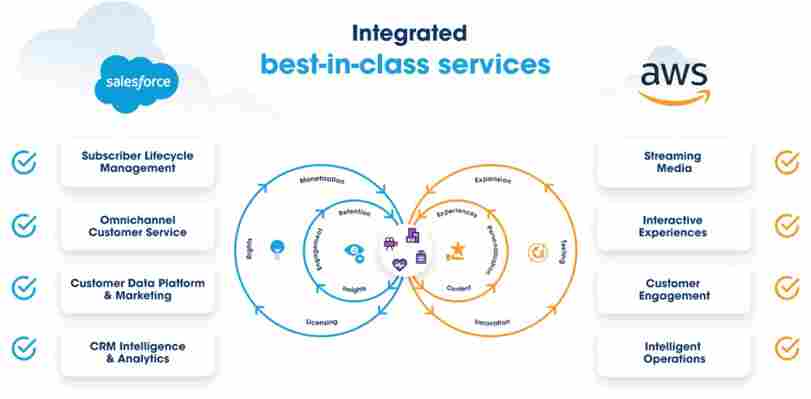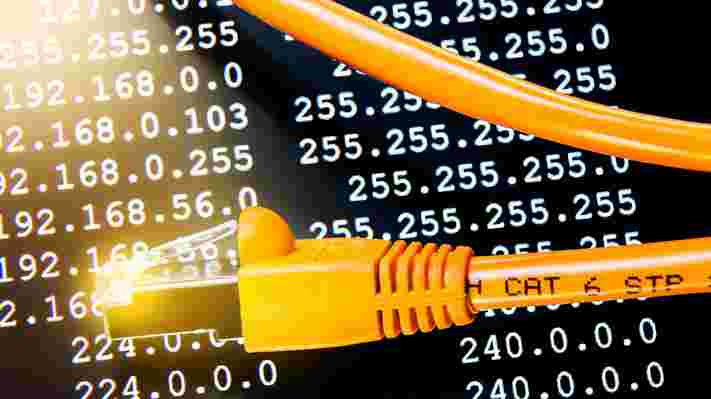Fitbit is working on a new way to help you manage stress throughout the day, with real-time alerts from your fitness tracker that give you early warning before you realize that the pressure is starting to build up. On February 24 the company registered a new patent describing how the EDA (electrodermal activity) sensor found in the Fitbit Charge 5 and Sense could be used to identify particularly tense moments, and help you take action to tackle them.
Most fitness trackers track stress throughout the day by monitoring heart rate variability, with a more changeable heart rate suggesting higher levels of stress. The Charge 5 and Sense work differently, using a dedicated sensor that allows you to perform spot checks if you notice yourself feeling tense.
When you open the EDA Scan app and place your hand over the watch face, very small electrical current is passed through your skin. The watch tracks changes in the resistance of your skin caused by sweat (called EDA responses), which indicates activity of your sympathetic nervous system . Put simply the more EDA responses are detected, the more stressed you are – physically or mentally.
Time to breathe
The new patent describes how the same sensor could be used to identify moments of particularly high stress, which it calls 'arousal events'. If an arousal event is detected, it's logged in a 'bin' corresponding to a period of time. If the number of events in a bin exceeds a particular threshold, your watch will display an on-screen notification. which could just be a warning, or may offer advice on how to calm yourself down.
The patent suggests that EDA monitoring could be carried out continuously, meaning you'd no longer need to take two minutes out of your day to check your stress level. This would also make it easier for you to tell if stressful moments correlate with a particular activity.

"For example, the user's response to a workout may be different if the workout is more challenging or if the user exerted a particularly large amount of energy," Fitbit explains.
"Determining how the user is responding to the stimulus may be useful for developing training and/or recovery routines. In another example, during a meditation session, arousal responses may be indicative of the user losing focus or having his or her mind drift, which may enable a prompt to alert the user to facilitate changes or improvements to their meditation session."
There's no guarantee that this type of continuous stress-monitoring will eventually make its way onto your wrist, but it would make sense considering Fitbit's recent focus on mental wellbeing . If it does, it's possible that it might be rolled out to Fitbit Sense and Charge 5 owners in a future firmware update.
AWS and Salesforce want to make video streaming better than ever
Two of the world's biggest technology firms have joined together in an attempt to make video streaming a more pleasant experience for viewers across the world.
AWS and Salesforce have launched a selection of new services aimed at improving video streaming for users everywhere, allowing content distributors to provide a wider and more intuitive range of services alongside a better end-user experience.
The new services combine AWS analytics, AI, and machine learning tools alongside Salesforce Customer 360 and its Media Cloud platform.
Streaming success
The companies say this collection of tools allows content providers such as TV and online networks to provide more personalized experiences for customers.
This could include more relevant adverts, suggestions of other content to watch or subscribe to, or recommendations on upgrading their viewing package, such as adding new channels.

This should also help improve customer satisfaction with the services they receive, hopefully leading to ongoing loyalty and longer subscriptions.
The new offerings will also allow the content providers to get more insight into exactly who their customers are, and what kind of services they are interested in, and want to see more of. Salesforce's technology will provide a wealth of information on what drives engagement for individual customers, offering ideas on content recommendations and more.
“Attracting and retaining a diverse audience while delivering consistent, high-quality video is one of the key challenges content distributors face today," said Christopher Dean, VP and GM, Media & Entertainment & Media Cloud, Salesforce.
"The Salesforce and AWS relationship brings together a comprehensive, industry-specific media offering designed for direct-to-consumer video and live streaming services. This allows content distributors to enhance their capabilities while also helping them rapidly launch new service offerings, such as subscription packages and product bundles."
“Together, we’re providing a customizable set of scalable and easy-to-deploy content tools and AI-driven subscriber journeys to further help studios, streamers, publications, and other distributors quench consumers’ thirst for personalized content.”
Forget cryptomining, here's how to use your computer to do good in the world
By now, you've probably heard about cryptocurrency and cryptomining, possibly because you too want to get a piece of that sweet, sweet speculative digital asset money.
If it were 2012, we'd be right there next to you, mining a couple of bitcoin or ethereum overnight on our laptops because it was an interesting project and you got a couple of neat digital tokens worth a couple of pennies out of it. No harm, no foul.
We are a long ways away from those halcyon days when cryptocurrencies were easy to mine on a smart phone because the blockchains they were based on had yet to sufficiently mature.
Now, mining just a single digital token takes enormous effort, and while people are willing to pay a lot of money for those tokens, the chances of you mining sufficient bitcoin or ethereum on your personal computer to justify the power expense are all but nonexistent.
A lot of apps offer to let you mine cryptocurrency while your computer is idle though, dangling the prospect of free money in front of you to get you to download their app.
Read the fine print, though – assuming the software is legit – and you're likely to find that these companies take a cut of every fraction of a digital token you mine during your computer's idle time. The goal isn't to help you earn money, the goal is to get thousands or tens of thousands of users to mine cryptocurrency for them .
So what should you do instead?
First and foremost, if you are not using your computer, the best thing to do is shut it off.
Modern operating systems on reasonably modern hardware boot up in a few seconds, rather than the minute it might have taken five or ten years ago. There really isn't any reason to put your computer into low-powered sleep or hibernate mode anymore.
But many of us still leave our computers idling all night for one reason or another, and you might be tempted to use that idle time for something productive.
Instead of mining cryptocurrency, though, there are plenty of ways to use that idle computer time for a good cause, rather than setting the planet on fire to help venture capitalists who got in on the ground floor of bitcoin get even more obscenely rich than they already are.

What is distributed computing and how does it work?
The blockchain technology behind cryptocurrencies and NFTs operates on a distributed network, meaning that copies of a specific blockchain exist on multiple systems connected by a network and transactions on the blockchain are only added if a consensus of those systems agrees to add it.
What all that means isn't really important, but distributed computing works in a similar way wherein a program or a process within a program is computed across multiple systems connected by a network.
So if you were to use distributed computing to run Google Chrome, for instance, you would have different computers on the network process different chunks of code, the results of which would be collected by one of the computers on the network tasked with managing everything and displaying the browser on a screen.
On the plus side, you might finally have enough RAM to run Chrome, but the downside is that distributed computing isn't a very efficient way to run a web browser. What it can do super efficiently, however, is data crunching and complex modeling, i the kind of work normally performed on supercomputers.
Programs on supercomputers are typically very basic, all things considered, but what they are doing is very computationally expensive. If you need to model a weather forecast for the next week, you typically have to factor in hundreds if not thousands of variables.
If each variable can have ten values, modeling all possible potential weather forecasts would take 10 ^ 100 or 10 ^ 1,000 computations for each step in the model. This is the kind of thing that can grind a normal computer to a halt, and then grind it into dust over the next century as it tries to work through each computation one by one for years on end.
But what if you gave 1,000 computers a subsection of that model to compute over a network and then have them return the results to a computer that collects the data and compiles it into usable forecast? Well that wouldn't take nearly as much time. That's the power of distributed computing, and its use in scientific and medical research has been growing for nearly two decades now.

The BOINC platform
The Berkeley Open Infrastructure for Network Computing (BOINC) started as a platform for finding aliens. It was built at the University of California at Berkeley to enable the SETI@home program, which allowed volunteers to donate idle computer time to help process radio signals from space to look for possible signs of extraterrestrial life.
The SETI@home project itself is in "hibernation" for now while researchers conduct "back-end data analysis", but the distributed computing platform they built to run the SETI@home project is now widely used by universities and research institutions for other processing-intensive projects (as is the @home convention, as you'll soon see).
These include protein fold modeling to learn more about diseases like Covid-19, projects that study climate change and astronomical phenomena, and important areas of research in mathematics.
While BOINC is safe to use, it is an open platform, so anyone can use it for their project without any kind of quality review. This means that some projects are more worthy of your idle computer time than others.
The BOINC website has a good checklist of questions to ask before you start contributing to a project, including who is sponsoring it, are its goals clearly described and a productive use of your idle computer time, and whether the project has previously published results in peer-reviewed scientific journals (thus demonstrating that it is actually serious about the research it is conducting).
BOINC's website has a list of projects that "are known to us at BOINC, and we believe that their descriptions are accurate." While this isn't a full-throated endorsement of the projects on the list, it is still a place to start.
We've pulled some of the most noteworthy projects that are sponsored by researchers at reputable universities and institutions, and which have a reputation for quality research.
Projects that don't run on BOINC
There has been some criticism of BOINC in the past that it takes up a lot of processing power when in use, which can cause CPU fans to noisily speed up, which can by a problem for some when they are trying to sleep.
While we haven't experienced this ourselves, that criticism is out there, so if you're looking for a non-BOINC distributed computing project to volunteer for, we've included a few additional options below.
This article is part of TechRadar’s Tech Resolutions series, a motivating blast of encouragement showing you how to supercharge your new year with tech. Running from Sunday December 26 to Sunday January 2, our series will also reveal how we’re aiming to level-up our gadget lives in 2022. So whether you’re looking to become a Chromebook power-user, beat your takeaway obsession with a new air fryer , or use a smartwatch to propel you to new fitness heights, we’ll show you how to get your new year off to a flier. And when it all inevitably goes wrong, you can always blame the gadgets.